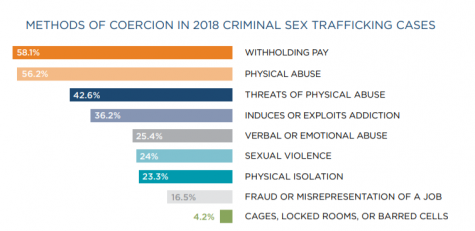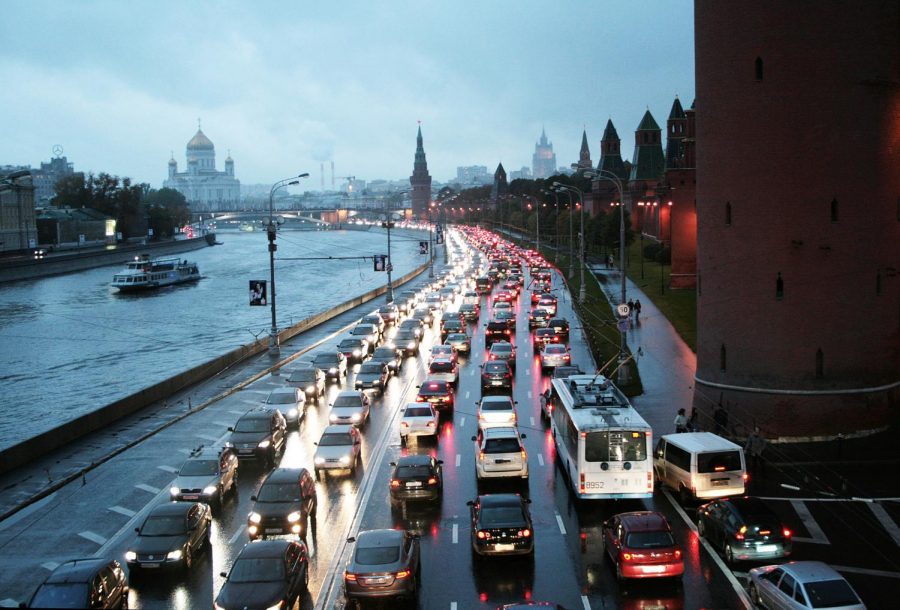Caught in Traffic
A traffic jam
February 13, 2020
Virginia has often been described as a wonderful place to live, but has a secret to hide. Behind the beauty hides the horrific crime of human trafficking, which is happening even now in 2020.
The Virginia Department of Criminal Justice Services describe human trafficking as criminal activity in which people profit from the control and exploitation of others. There are two types of human trafficking: sex trafficking and labor trafficking.

Statistics of human trafficking in Virginia.
As of 2018, there were 198 human trafficking cases reported. Human trafficking has been referred to as modern day slavery, forcing people to work without any choice. Comparing sex trafficking to labor trafficking shows the massive divide between the two types of slavery. The percentage of criminal cases that cover human trafficking is 86.5%. This statistic becomes even more frightening when you take into account that 51.6% are only children. Luckily most of these cases end with a conviction, but this does not take away the trauma a victim has gone through.

A pie chart of criminal cases sorted by type.
These victims do not stay on their free will either. The victims’ captors use many different ways to keep them under their control. The traffickers themselves often withhold the pay of these sex workers, many of the people trafficked are physically abused.

Methods of coercion in sex trafficking as of 2018
Currently, there are eleven federal laws put in place to stop human trafficking. This includes the Trafficking Victims Protection Reauthorization Act (TVPRA) of 2000, 2003, 2005, 2008, and 2013. This law established multiple methods of prosecuting human traffickers, preventing human trafficking, and protecting the victims/survivors of trafficking. This cemented human trafficking and all related offenses as federal crimes. This also ensures that victims of trafficking are compensated.
The act also established a safeguard called the Office to Monitor and Combat Trafficking in Persons, this is required to publish a Trafficking In Persons (TIP) report each year. The TIP report recounts and ranks the efforts of countries to combat human trafficking. The act also cemented the Interagency Task Force to Monitor and Combat Trafficking, which helps in the implementation of the TVPA. The TVPA protects victims and survivors of human trafficking by establishing the T visa. This allows victims and their families to become temporary U.S. residents and eligible to become permanent residents after three years.
Another safeguard is the Mann Act of 1910. This criminalizes the transportation of minors and the coercion of adults to travel across state lines or to foreign countries, for the purposes of engaging in commercial sex. Both crimes are punishable with up to twenty years in prison, with enhanced punishment options for the transportation of a minor.
An additional law includes the Tariff Act of 1930 which prohibits the importation of goods made with forced/indentured servitude.
While these laws have been put in place to end and prevent human trafficking while aiding the victims, human trafficking still continues around the world, even in the places you may think are safe, such as Virginia.



